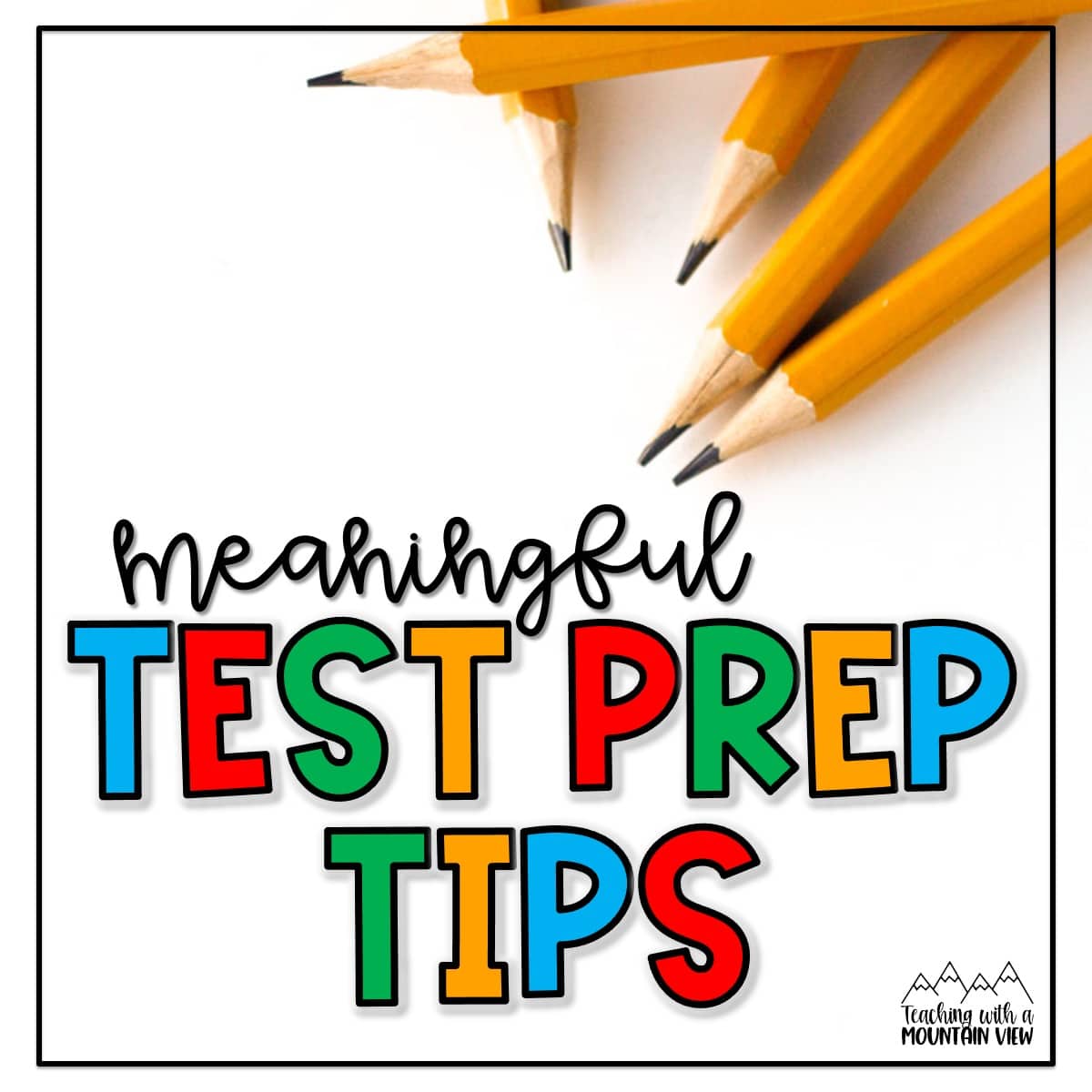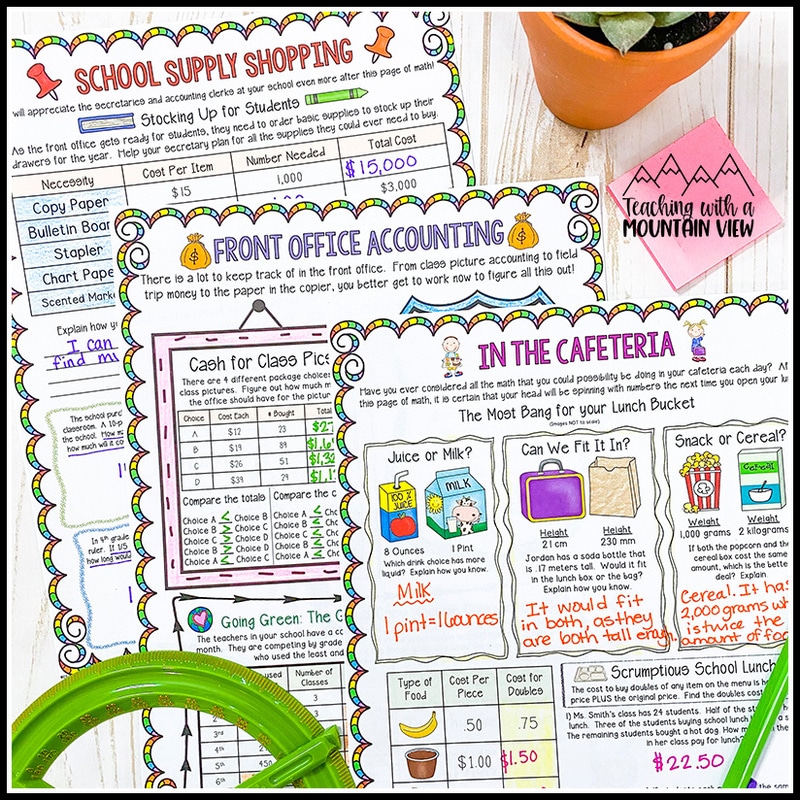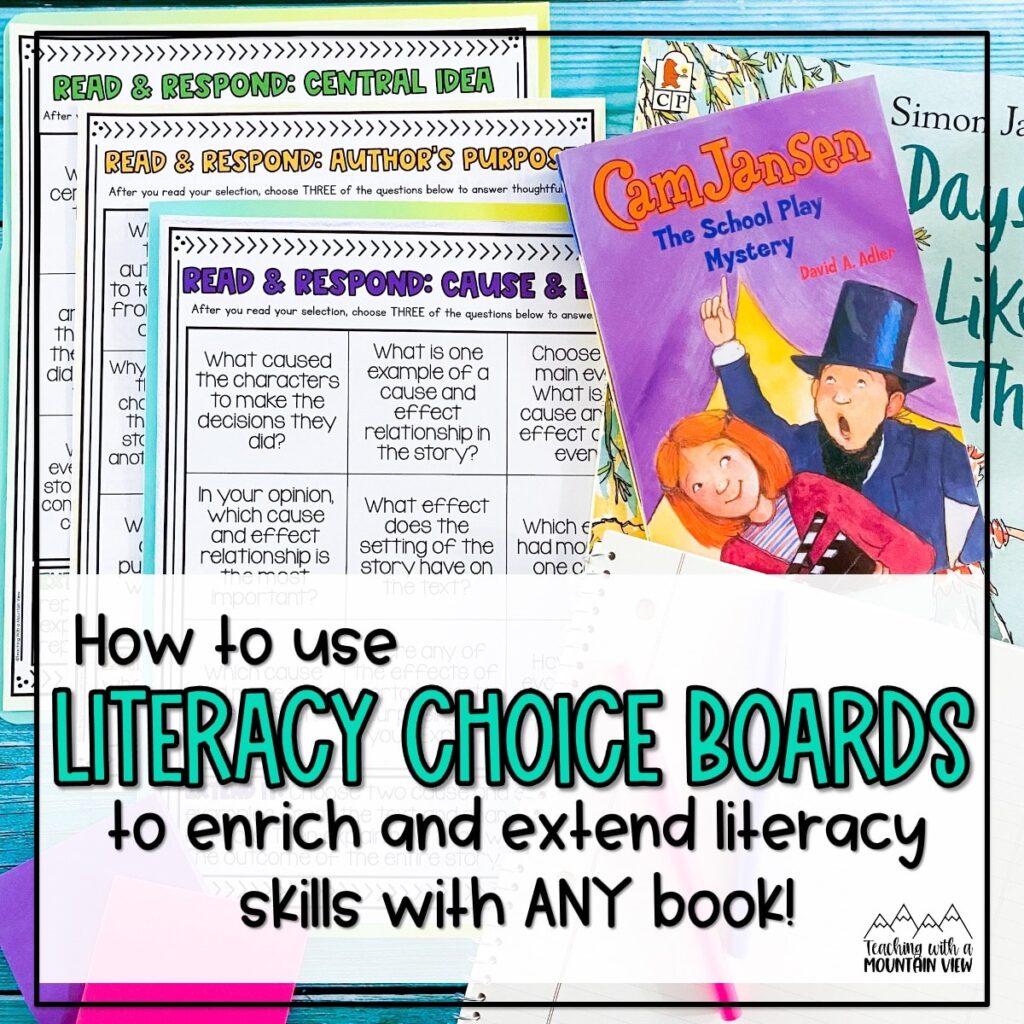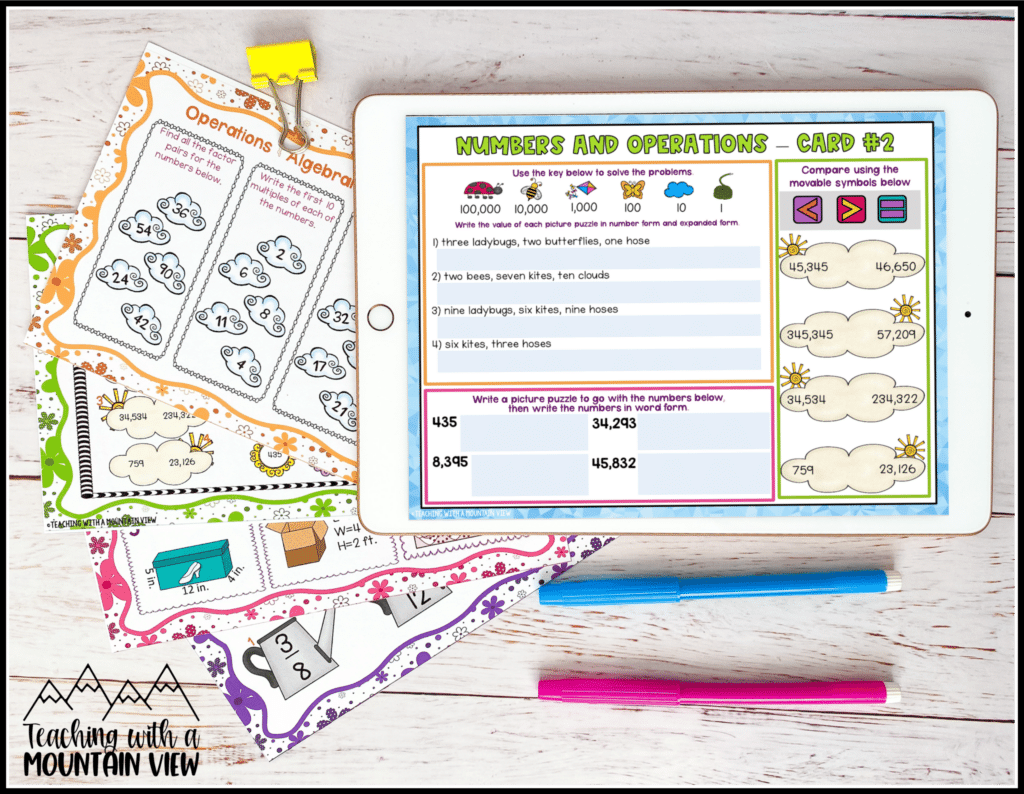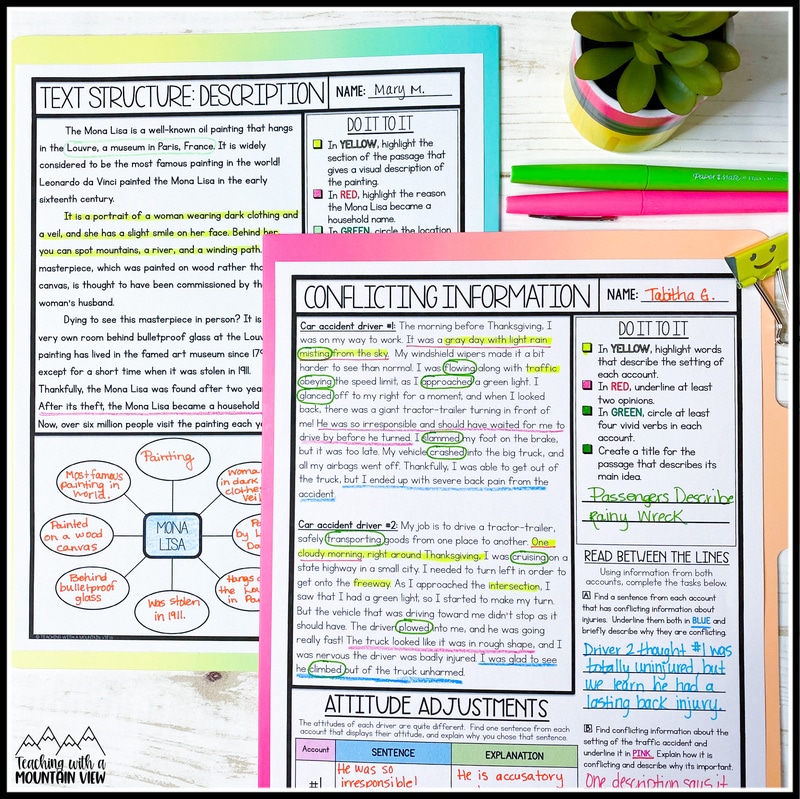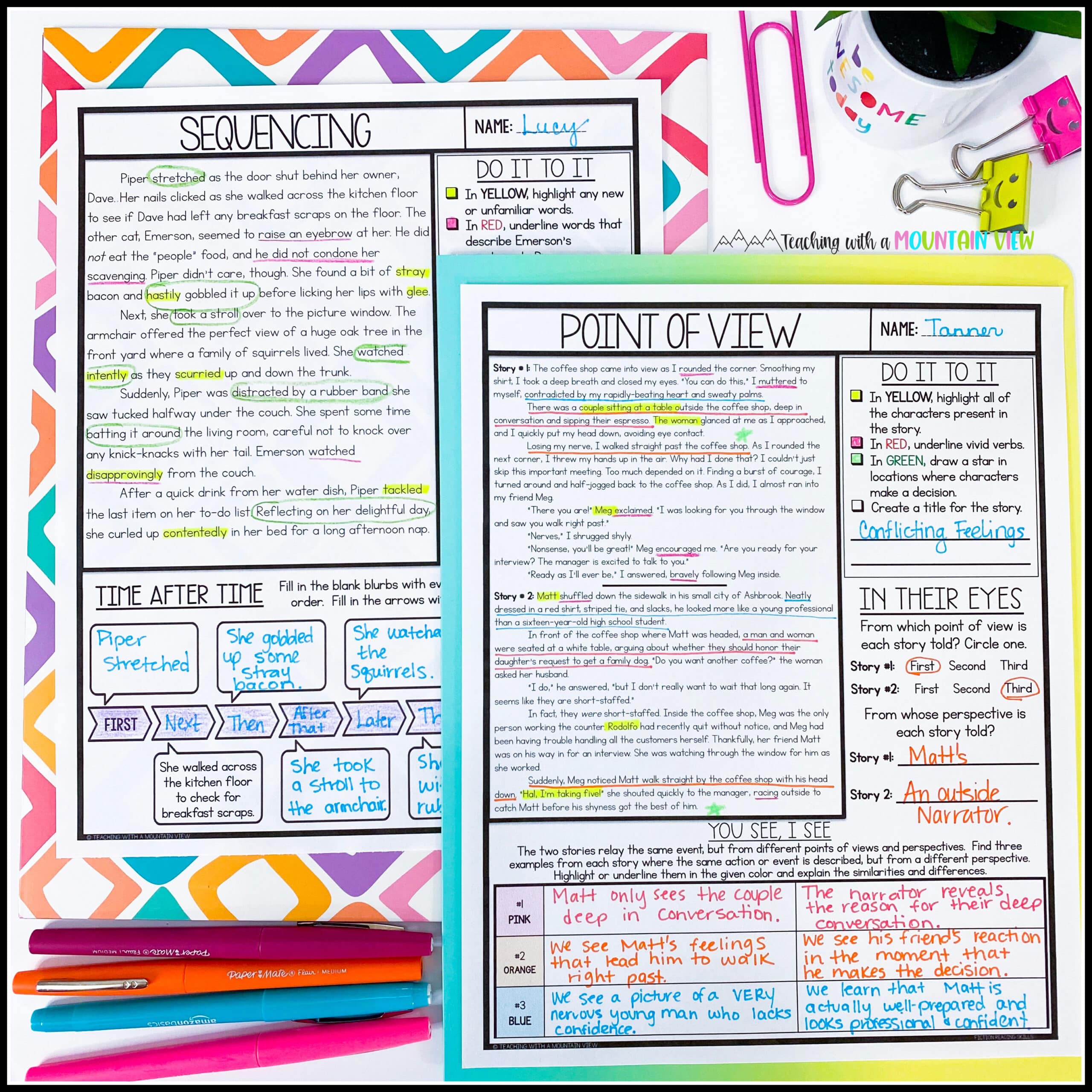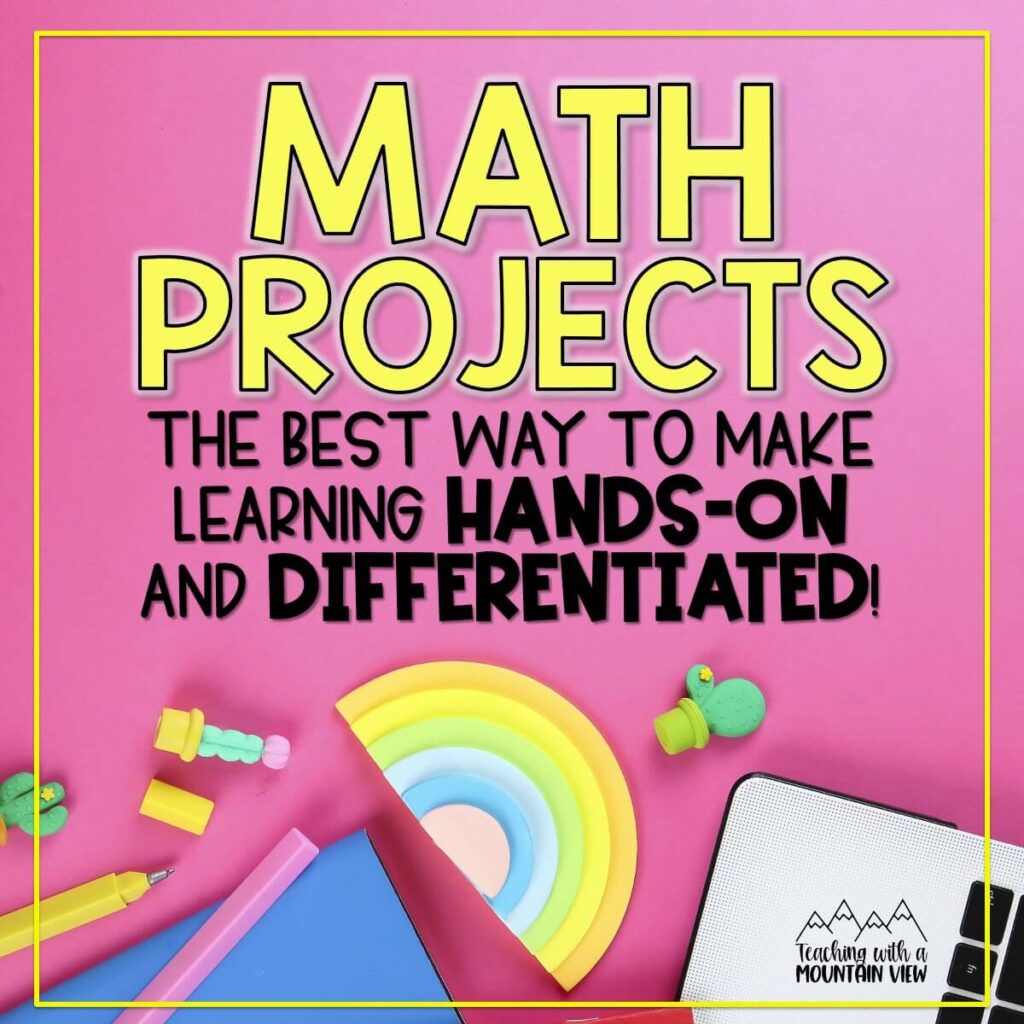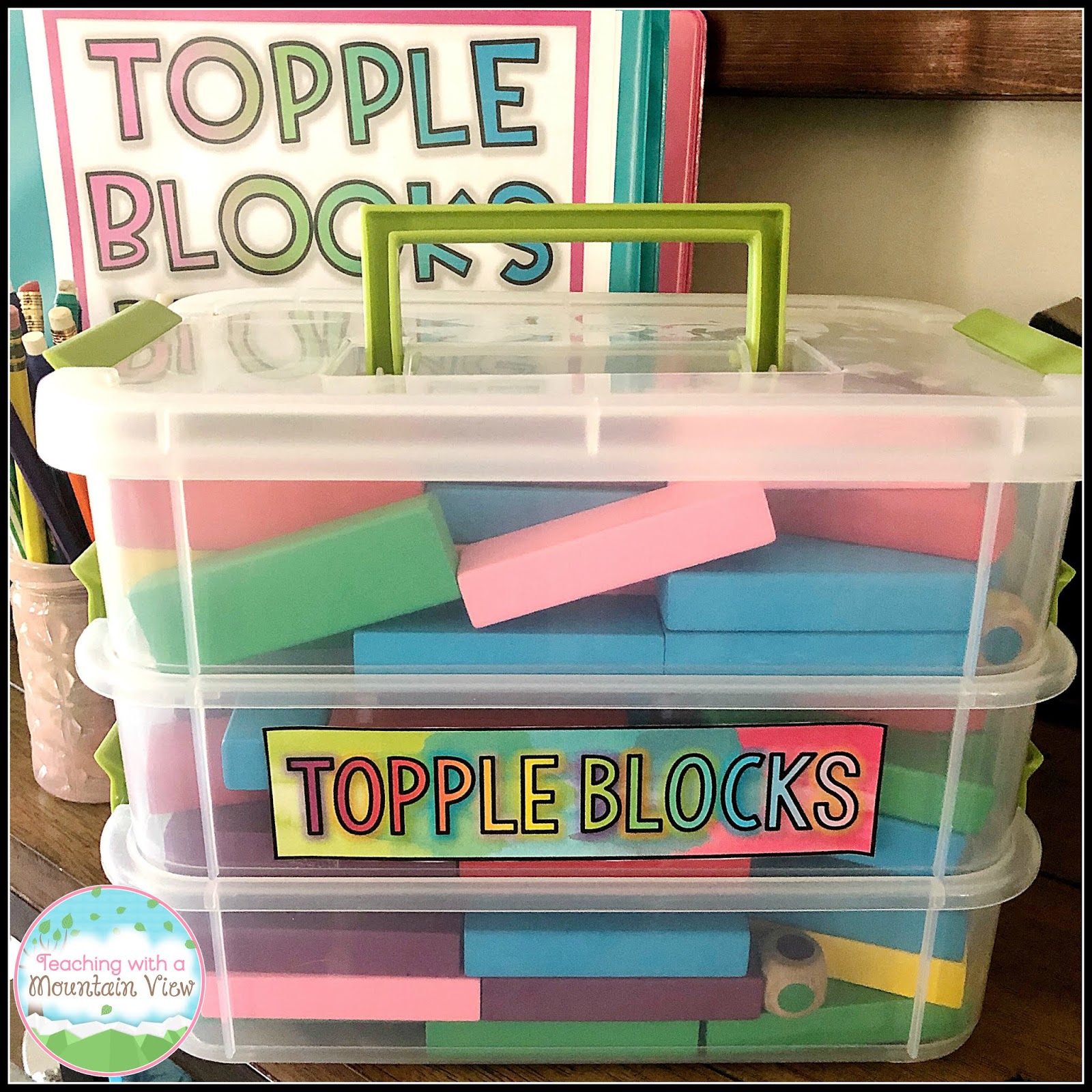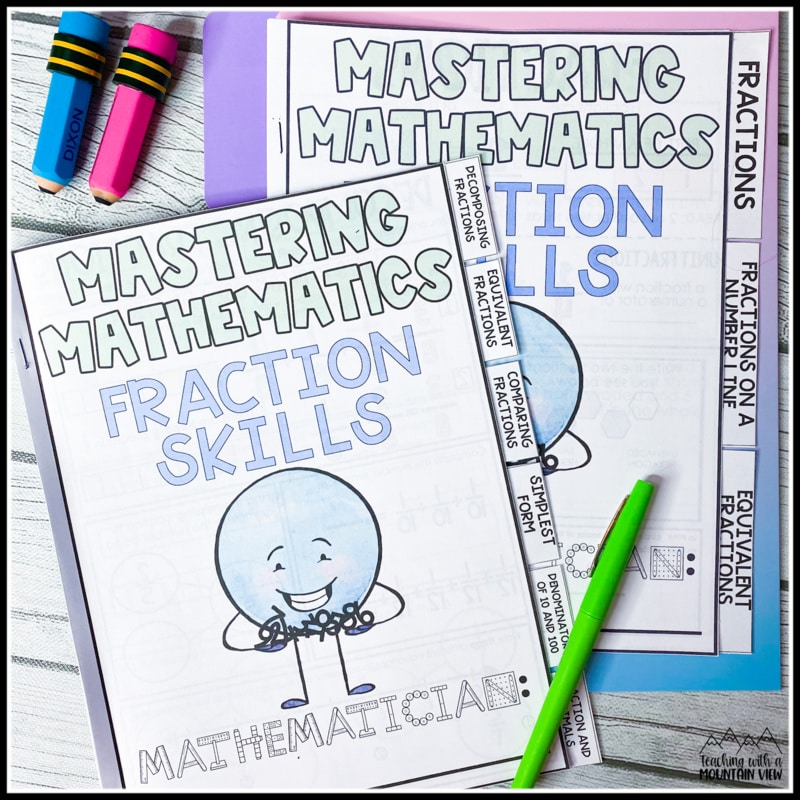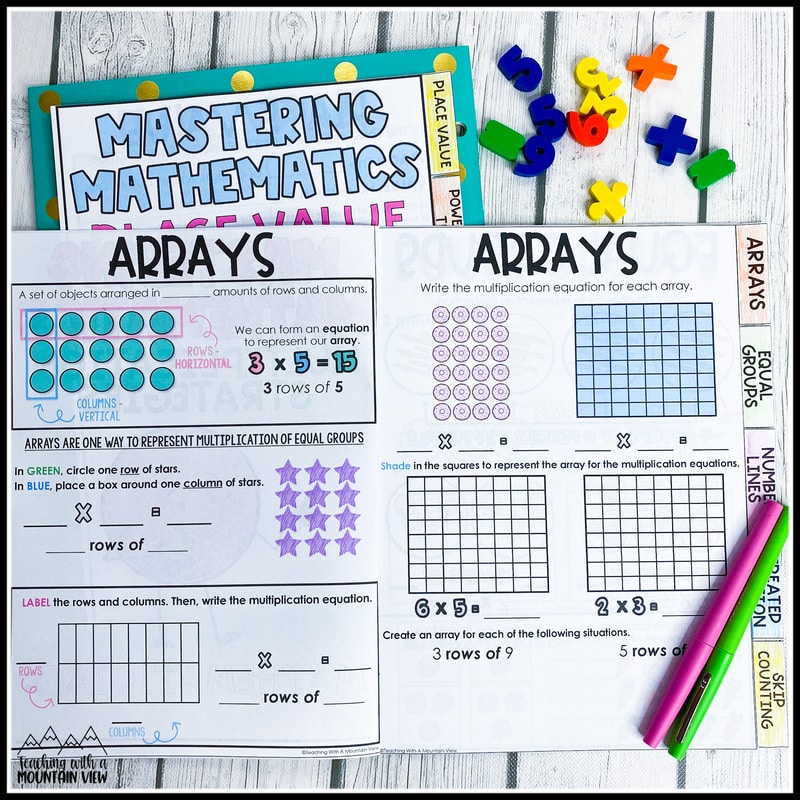As you inch closer to state testing, do you ever feel like you’ve wasted the last few months on routine test prep instead of meaningful learning with your students? It’s not a good feeling at all. Feelings aside, it also can unintentionally send students the message that their comprehensive learning is less important than their test scores. While the data from standardized testing can be a useful tool, we ultimately want students to become lifelong learners. My mindset is that test prep should integrate seamlessly into our routine. I don’t want it to feel like a big deal to students and also want to avoid the tendency to drill and kill. Here are some test prep tips for students to help you prepare for the state exam without taking away meaningful instruction.
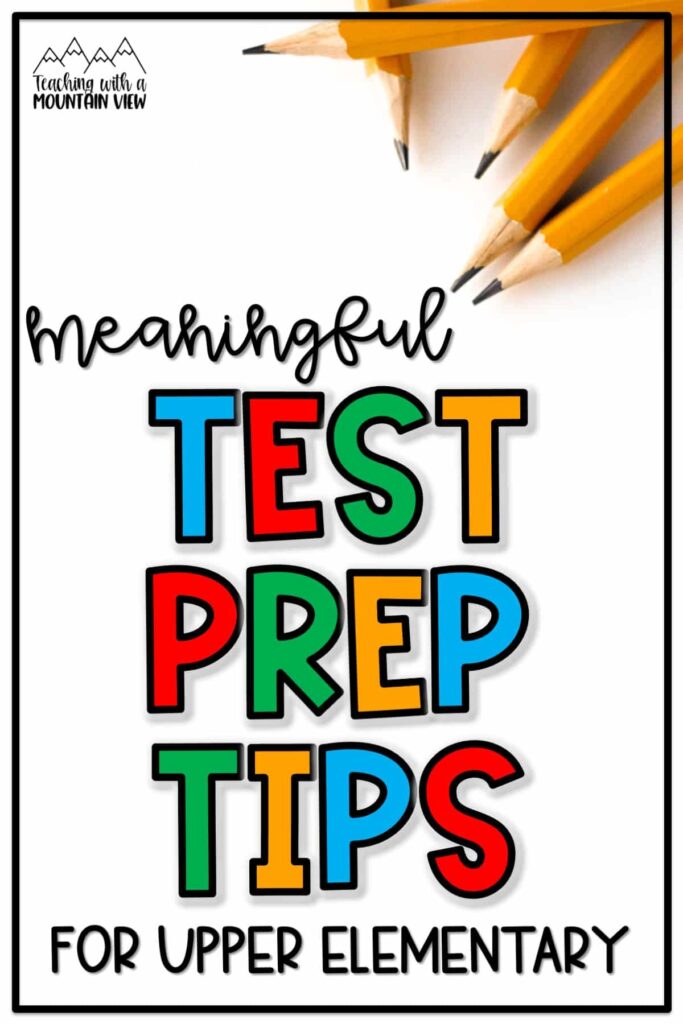
How Can Test Prep be Meaningful?
We’ve talked about why test prep should be meaningful, but let’s talk about how. I know it sounds simple, but shifting my mindset from thinking of preparation as “test prep” to simply “spiral review” made a big difference for me! Here are a few test prep tips for students.
#1 Project Based Learning
When you need to review essential math skills, you don’t have to whip out worksheets and workbooks to get the job done. Project based learning is a great way to make test prep meaningful.
PBLs can help students see how their learning is relevant to real life while practicing other skills beyond what will be tested (such as social skills, time management skills, reflection skills, etc).
I use this Sum of School Project during testing season. It covers every single math skill 4th and 5th grade students need to know, but in a meaningful way. For example, students will calculate the cost of school lunch or time elapsed during the school day. This project is no-prep, so you can easily prepare it during the crazy testing season.
#2 Student Choice
A second test prep tip is to involve students in decision making. This encourages them to be reflective and take ownership of their learning. Student choice can be as simple as voting at the beginning of the week for which topics you’ll review in class or ranking a few skills they want to practice. Then use that data to create your test prep small groups. This will take some guidance, but it definitely makes the test prep season feel more meaningful to students on a personal level.
Choice boards are another way to encourage student choice while still covering all the necessary skills and they can be used for differentiation too! You can create your own choice boards to use with picture books as a way to review important reading skills with shorter texts. The boards can be personalized to specific skills each group of students needs more practice with based on assessments.
In addition to test prep, I always have choice boards in my students’ reading journals that include dozens of prompts for responding to text. As a bonus, they meet many different learning styles and cover Bloom’s Taxonomy too. You can learn more about using choice boards and download a free set to try in this post.
#3 Engaging Cumulative Review
A third way to make test prep meaningful for students is to use authentic and engaging cumulative review activities during morning meeting, centers, or small groups at the teacher table. Sometimes “review” brings to mind bubble sheets or endless worksheets. That doesn’t have to be the case! While we work on grade level skills all year long and spiral review daily, sometimes assessments still show that students need to brush up on specific skills. That’s where more targeted review is needed.
I use this math review test prep bundle with all of my 3rd, 4th, and 5th grade test prep packs. It is filled with easy-prep task cards and Google Slides to use for whole class review. Having access to multiple grade levels will allow you to differentiate for the various learners in your classroom to make review extra meaningful.
Each pack reviews ALL STANDARDS for each grade level, so you can target exactly which skills your students need.
If you’re looking for a reading test prep resource to use with cumulative review, this Reading Review Bundle is perfect. This bundle provides relevant and rigorous passages, each reviewing a specific reading skill like inference, point of view, and sequencing. This resource could easily fit into morning meetings or at your teacher table.
#4 Variety of Review Formats
Another test prep tip for students is to review in a variety of ways so that every student has a chance to access the information in a style that appeals most to them. For example, your learners with a preference for hands-on, kinesthetic activities will love reviewing with a math project or Topple Block game.
You can also incorporate a daily number talk to encourage mathematical discourse, which is great for students who prefer more auditory tasks. You can even serve your visual learners by using flipbooks for note taking. I like these Math Review Flipbooks because they are filled with visual aids like charts, number lines, tables, and analog clocks.
You can also use the flipbooks in a variety of other ways. Have students work on them as morning work, in centers, for homework, or in your teacher station. The flip books cover topics like multiplication, place value, area, and perimeter.
#5 Practice Test-Taking Strategies
Finally, there are some test-taking strategies that need to be explicitly taught in preparation for assessments. We discuss a few strategies that can help students feel more prepared and confident.
For math problem solving we review the CUBES strategy, which you can read more about in this post.
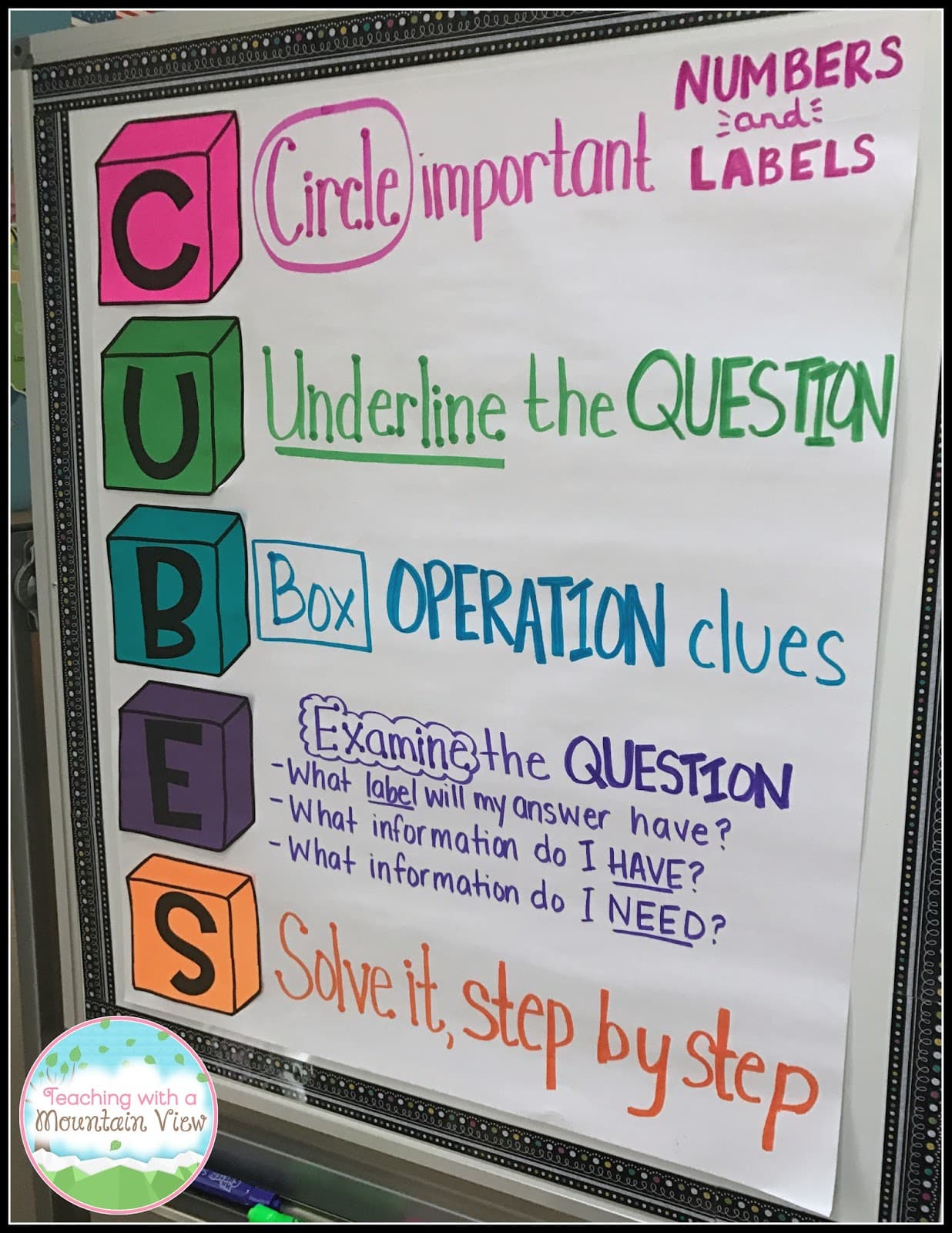
For ELA, we practice skills like reading the questions before the passage and underlining key information. This ELA Test Prep post has more great tips!
We also do general test preps tips such as:
- Going to be on time
- Eating a healthy breakfast
- Doing your personal best and having a positive attitude
- Leaving the hardest questions for last
- Checking your work
- Reading all answers and eliminating the obviously wrong answers
- Watching for signal words
Books to Read Before Testing
While we’re thinking about reading, let’s talk about another great test prep tip: share positive mindset books with students before testing! Throughout the year, you’ve walked alongside students and guided them to build their self-confidence and positive mindset. This is especially critical going into testing season! We want students to go into their tests feeling confident and positive. Read alouds are a great way to cement and reinforce that positive mindset. All of the links below are Amazon affiliate links for easy browsing.
What Do You Do With a Chance? By Kobi Yamara — I love this book and the creative way it encourages students to take chances, even when it’s difficult. In the book, a child sees a chance, but he lets it go. He finds the more he ignores the chances, the less they come. And then they stop altogether. Eventually, he learns to take a leap of faith and give it a shot. After reading, have students write about a time they took a chance, and it worked out! Ask them to write how they felt, and how they would encourage others to take a chance.
Jabari Jumps by Gaia Cornwall — Jabari is ready to jump off the diving board…he thinks. He knows how to swim. He is great at jumping. But he’s having a hard time taking the leap. It should be easy, but is it really? A fun activity after reading this book is to have students create a comic strip where they envision themselves doing something they are scared of (like playing a sport, speaking in public, trying out for a club, etc). Then, have them imagine the best case scenario if they took that risk.
Flight School by Liys Judge — Penguin wasn’t really built to fly, but he wants to! Despite the challenges, he is committed to making it happen. Even if he has to try, and try again. After reading, guide students as they set a goal for the upcoming test and make a plan for how they will achieve that goal. This is a great time to talk about how not being able to meet a goal doesn’t mean you didn’t try… it just means you have to try again!
The Most Magnificent Thing by Ashley Spires — A little girl has the most wonderful idea: she’s going to create something magnificent! She’s just not sure exactly what that magnificent thing is yet… She works hard, gives up, and then tries again. Will she eventually create something magnificent? After reading, have students create a catchphrase or mantra. What can you say to yourself in hard times? What can you say to encourage yourself? It would even be fun to come up with a class catchphrase.
The Thing Lou Couldn’t Do by Ashley Spires — Lou really doesn’t want to climb a tree. She makes up a lot of excuses for not climbing up the tree. But the truth is… Lou is afraid she won’t be able to. Should she give up or try and see what happens? After reading, have students turn and talk about how they’re feeling leading up to the test. If they are feeling nervous or worried, discuss how they can support each other. This is a great way to build community and support leading up to the exam.
Quick Test Prep Tips for Students
We talked about ways to make test prep meaningful, now let’s talk about some practical test prep tips for students! These include testing strategies that can help your students succeed during the exam, and they are easy for your students to remember.
#1 Look for “Sus” Phrases
This test prep tip for students comes from Emily inside the Inspired in Upper Elementary Facebook Group. Teach students to look for “sus” phrases. “Whenever they see things like “always,” “never,” “every,” “all,” “none,” “impossible,” etc, they should think twice about the answer. It doesn’t mean that those answers won’t ever be the correct answer, but they know that tests might try to trick them into thinking that the answers are correct.”
#2 Take the Test “Twice”
We often tell students to “check their work,” but don’t tell them exactly what this looks like! Encourage students to take their time, look back over their answers, and check their bubble sheet to ensure they answered every question. Put this on an anchor chart leading up to the test and review it daily!
#3 Read the Questions Before the Passage
This is a classic test prep tip. Encourage students to start with the questions first and use them as a roadmap while reading the passage. If they spot an answer to a question in the passage, or they spot some information they will need to answer the question, have them underline or highlight it.
#4 Teach Them How to Read the Questions
We know that test questions can be tricky. Make students familiar with question stems and verbiage throughout your test prep. Then, when students see that used on the test, they won’t panic.
I suggest going through old state tests and pulling sentence stems from there. For example, some of the sentence stems you could use are:
The main idea of the passage is…
Why does the author include ____ in paragraph ____?
Based on _____, the reader can infer that….
The word _____ means….
The reader can conclude that….
#5 A Score is Just a Score
If you only use one test prep tip, this is the one I’d encourage you to take away. Don’t go for scare tactics that build anxiety. Remind students that they should absolutely try their hardest, but that whether they “pass” or “fail” does not indicate their intelligence or self worth.
As you enter this test prep season, I am cheering you on! I know it can feel overwhelming, but I hope you’re able to leave this post with some practical test prep tips for how to make test prep meaningful for your students. If you want to read some of my other thoughts on test prep, you can read this Great Big Collection of Test Prep Resources and this Test Prep Ideas post.
Mary Montero
I’m so glad you are here. I’m a current gifted and talented teacher in a small town in Colorado, and I’ve been in education since 2009. My passion (other than my family and cookies) is for making teachers’ lives easier and classrooms more engaging.







